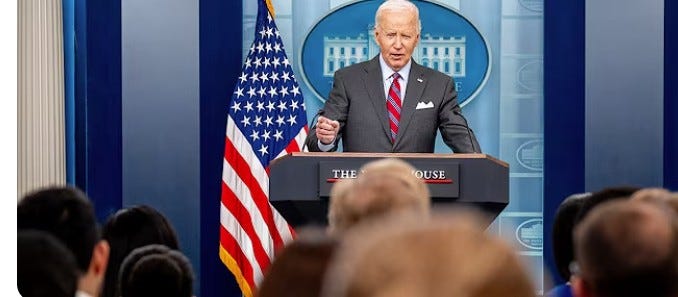Another day, another shooting. On Monday, there was a killing at a Waffle House in Indiana, and over the weekend, two police officers and a paramedic were slain in Minnesota. The carnage in Kansas City this month, as the metropolis celebrated the Chiefs’ Super Bowl victory with a parade, was an even more pointed reminder that gun violence in America is not only ubiquitous but also worse than in other countries. This is the unfortunate merger of our unfettered and elementary school version of personal rights—“It’s a free country”— baked into our DNA. It (Who has not uttered some variation of this when in trouble?) Then, of course, there’s the widespread access to firearms, as evidenced by Missouri’s not prohibiting minors from open carry. But why persons become mass shooters remains mysterious. Despite extensive social science and medical research, we can still say that mental illness is sometimes a factor, but we don’t know exactly why some people prone to violence avail themselves of a weapon and fire en masse.
One clue that I’ve focused on in my recent book on Lee Harvey Oswald is the intriguing, if not necessarily causal, relationship between shooters and their mothers.
Consider a recent example. An unusual trial has just concluded in Michigan, the case of Jennifer Crumbley, the mother of Oxford High School shooter Ethan Crumbley, now 17, just convicted of involuntary manslaughter in the massacre that her son perpetrated in November 2021. He shot and killed four students and wounded seven others, including a teacher. It’s the first time that a parent has been held criminally accountable for their child’s mass shooting. Ethan’s father and Jennifer’s husband, James Crumbley, will go on trial later this year.
Prosecutors rarely charge parents for their children’s crimes. Think of teenage drunk driving, for instance. But the Crumbleys’ behavior was so shockingly neglectful that prosecutors chose to indict the parents who fled the jurisdiction after their son’s arrest and were caught near the Canadian border after a police manhunt. Four days before the carnage, James bought his son a gun, and his mother took him to a shooting range to practice—and then posted about the outing on Instagram. Jennifer was charged with making a firearm accessible to her son and ignoring his mental health issues. The child had been drawing violent images and was tormented by an internal nightmare of homicidal and suicidal fantasies. The day before the shooting, the school told Jennifer that Ethan was looking at images of ammunition on his phone. Hours before the shooting, the parents were called to the school and said that Ethan was drawing the problematic images with the message, “The thoughts won’t stop. Help me.” Urged to take Ethan home and seek counseling, the Crumbleys declined and left after half an hour. Ethan was permitted to finish the school day.
This is not the first time we’ve seen American mothers implicated in the gun violence of their sons. We can presume that most mothers are horrified by the unforeseen results of their child’s downward spiral. (Fathers, too, have been implicated in these incidents, but not as often, for they are generally not part of the raising of these young killers, although their absence is undoubtedly a factor.)
This strange gun-mom lineage stretches back into the 19th century, involving secret codes and behaviors, the nods and winks that only a mother can pass on to a son. In 1864, Zerelda James, mother of Frank and Jesse, as well as a slaveholder and Confederate, stepped up on their behalf after they took part in the infamous massacre of 34 unarmed Union soldiers at Centralia, Missouri, led by “Bloody Bill” Anderson during the Civil War. She was proud of Frank and Jesse, she said, and she asked God to protect them. Later, after the boys mounted a series of bank and stagecoach robberies and became fugitives, she proclaimed their innocence and told reporters that “no mother ever had better sons.”
During the 1920s, Ma Barker, matriarch of the eponymous crime gang, encouraged her sons’ rampages across the Great Plains. When those in the various Missouri bergs where she and the boys lived objected to their behavior, she would say, “If the good people of this town don’t like my boys, then the good people know what to do.” She was later memorialized in White Heat, the classic film noir starring James Cagney as one of her wayward sons who dies above it all, almost like they always planned—at the top of a prison clock tower in a shoot-out with guards, yelling, “Top of the world, Ma.” In real life, Barker went out in a hail of gunfire, along with one of her sons and other members of her gang, surrounded by federal agents in a cottage in Ocklawaha, Florida.
Then there was Adam Lanza, who killed 20 students and six teachers at Sandy Hook Elementary School in 2012. His mother, Nancy, collected what her ex-husband called “powerful weapons” and provided Adam with guns, and often, the two would go to the shooting range together and practice their skills.
A really bizarre scenario involves Christopher Harper-Mercer, who shot up his classroom with semi-automatic weapons at Umpqua Community College in Roseburg, Oregon, in 2015, wounding eight classmates and killing eight others, including an assistant professor. He had become proficient at shooting at local rifle ranges, using guns given to him by his mother, and sometimes she would join him. What sets Harper-Mercer’s life apart from the others is that before he was born, his mother read Donald Trump’s The Art of the Deal to him as a kind of fairy tale, as I wrote in LitHub, conjuring a world of high finance and international empires and if you played your cards right, it was yours for the taking. Imprinted with this fable, he made a few investments when he grew up. But they were all for naught, and over the years, things just didn’t work out, and one day, it all erupted at school.
Lee Harvey Oswald experienced a similar upbringing with his mother, Marguerite. She didn’t provide the future U.S. Marine marksman with guns, but she armed him psychologically to the point that, ultimately, he was locked and loaded. Like some other parents in this accounting, Marguerite had long felt persecuted, that the world owed her a living, and that her son was never wrong. She worked low-paying jobs, including shop clerk, babysitter, and peddler of notions out of her living room. She constantly moved, uprooting her family 20 times by the time Lee was seventeen. Amid those years, there was a failed marriage involving a wayward husband she caught mid-affair with his shirt and tie askew and his girlfriend answering the door in a negligee, just like in a B movie. As her resentment towards the world festered, she sought favors, rarely said thank you, and hardly ever accepted responsibility for her actions. As a boy, Lee emulated Marguerite, blaming others for his troublesome behavior or covering it with elaborate stories.
Marguerite never held him to account. As a nine-year-old, Lee went to the house of the lady next door, brandishing a handful of rose bushes from her front yard. “Look what I did,” he said. The bushes were a gift from the neighbor’s husband, “Don’t do it again,” the lady admonished Lee. She also told Marguerite, who said nothing when most parents would have been mortified by their child’s behavior.
It was the same when Lee was a teen. There was the time when the football coach told Lee to run sprints during practice. “I don’t have to,” replied the boy. Deploying the mantra of a nation he’d so grievously wound in November 1963, Lee added, “It’s a free country.” Despite being kicked off the team, Lee suffered no repercussions at home and, if anything, had a new story of defiance to add to his growing repertoire.
And then there was “the thing with the knife.” At the age of 12, when Marguerite and Lee were living with Lee’s older half-brother John and his wife, he was asked by his sister-in-law to turn down the television. Lee lunged at her with a knife. Marguerite told Lee to drop it, and then he hit his mother. When John found out, Marguerite was a font of excuses for Lee, saying it was not a big deal. Lee had been whittling. It was just a pocket knife. There was a misunderstanding. Much later, the record revealed something more menacing, involving not just television volume. There seems to have been a discussion about who mattered more to John—Marguerite or his wife. Marguerite leaned on Lee to take her side, and then he attacked his sister-in-law with a pocketknife, or maybe it was a kitchen knife. Finally, Marguerite claimed that Lee never used a knife, although he could have—implying that he had acted magnanimously. In any case, there’s the possibility that Lee could have seriously wounded, or even killed, his sister-in-law. Around this time, he was often in trouble at school. Finally, Marguerite was called in for a conference and advised to seek counseling for her son—the same scenario we have seen in the Ethan Crumbley case. Instead, she withdrew Lee from that particular school in the Bronx and moved back to New Orleans.
Shortly before he turned 20, Lee defected to Russia, renounced his U.S. citizenship, and applied for citizenship in the Soviet Union, stating that in America, “workers are slaves”—perhaps a nod to his mother’s plight. His request was ultimately rejected. He returned 18 months later with his bride, Marina, a Soviet national. One day, Marguerite entered their apartment and found Marina nursing their baby. Her head was down, and when she looked up, Marguerite noticed that she had a black eye. “Mama-Lee,” Marina mustered in Russian style, addressing an in-law. Marguerite approached Lee in the living room where he was reading. “Lee,” she said, “what do you mean by striking Marina?” “That’s our affair,” he said—and she agreed. “There may be times,” she subsequently remarked, “that a woman needs a black eye.” Lee continued to beat his wife and, by many accounts, was never stopped or called out again by his mother or anyone else.
After Lee himself was killed by Jack Ruby the day after the Kennedy assassination, was s the nation witnessed Marguerite’s persecution complex. Lee was a martyr, she proclaimed, and compared herself to Mary at Calvary. She denied her son’s involvement in the assassination—he had told reporters that he was a “patsy”—but added that if Lee had, in fact, killed John F. Kennedy, he was doing the country a favor by putting him out of his misery. You see, the president had Addison’s Disease, a debilitating affliction that may have destroyed him eventually. And who knows what a commander-in-chief’s slow death would have meant for America? She said Lee should have been buried like JFK at Arlington National Cemetery. To his mother, Lee was a national hero.
As I wrote in my recent book American Confidential, Marguerite and Lee had become “a conspiracy of one,” locked in a campaign for recognition. Lee was urged on by his mother’s codes and signals, finally carrying out an act that the world would never forget, gaining eternal notice.
Would the incidents recounted here have occurred if mothers had not sanctioned their sons’ alarming behaviors? When affection is associated with defiance and violence, what will a young person do to win love from the most significant figure in his life? Such are the questions that shadow the conviction of Jennifer Crumbley. And for the record, Ethan was tried and sentenced to life without parole. Imprisoned, he is one more desperate boy with an aching need to be noticed, which he had been on Instagram in that fun-at-the-gun-range post from his mother. That a parent was charged, let alone convicted, for their role in their child’s mass shooting is sadly welcome. It acknowledges how family dynamics and a mother’s twisted notion of love contribute to gun violence in America. “I am going to be the next school shooter,” Crumbley had said before the attack, a 21st-century echo of Cagney’s cry, “Top of the world, Ma!”
The post Mothers, Sons, and Guns appeared first on Washington Monthly.










